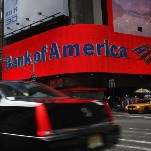Americans Still Don't Know Much About Money
LatestAs life and The Big Short have taught us, we are screwed until eternity and financial uncertainty is nearly inevitable.
To make ends meet, it helps to know a little bit about capitalism, numbers and how the system works. But a new study released Wednesday by the FINRA Foundation found that most Americans are financially illiterate, even post-Recession. Almost two-thirds of us do the thinking-face emoji when it comes to basic money issues. Do you have any idea what a bond is?
-

-

-

-

-

-

-

-

-

-

-

-

-

-

-

-

-

-

-

-

-

-

-

-

-

-

-

-

-

-

-

-

-

-

-

-

-

-

-

-








































